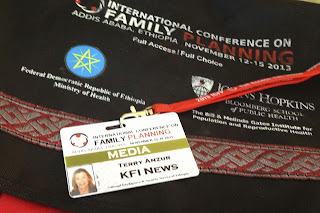Imagine standing all alone in the footsteps of gladiators at Rome's Coliseum. Or being almost the only car on the spectacular road that winds along the Amalfi Coast.
It may sound impossible. Tour groups tend to mob the major attractions during high season. But come to Italy during the winter and you'll have the place to yourself, except for the people who actually live here.
 |
| Lunch among the wine bottles at an enoteca. |
Our family decided to meet in Rome during our son's "spring" break from grad school in Europe. It just happened to be the first three weeks in February. There are two major problems. Temperatures hover between 35 and 55 degrees Fahrenheit and it gets dark by 6 pm. So forget the warm nights of strolling past the Fountain of Trevi for a gelato. It's too cold for ice cream. You'll need to dress in layers. My hooded ski parka and long silk underwear kept me from freezing more than once. And we spent some evenings with wine and cheese in our apartment or hotel room rather than braving the nightly chill. But you can pack in a lot of sightseeing during the warmer daylight hours because you don't have to compete with endless tour groups for tickets and photo opportunities. A word about how we roll: we're a fit American couple traveling with a 20-something son, and we take the position that we can see the major sights of any city in about two full days. In Italy, the entire country shuts down for lunch between noon and 3 pm, so we planned our big meal for mid day and snacked for breakfast and dinner most of the time. We're also into stretching our weak US dollars as far as possible. We purchased a 3-day
Roma Pass, which included admission to two major attractions, reduced admission to others, and unlimited rides on Rome's metro and bus system.
 |
| Almost alone with the ghosts of ancient Rome. |
First stop, the Coliseum in Rome. It was only a two-block walk from our
apartment near the Cavour metro. If you arrive before 9 am, you might have to ask directions to the ticket booth because it's not obvious when you're the first people to show up. Combined with the Forum on Roma pass, admission was free.
 |
| The baroque town of Scicli in Sicily. Everyone is sleeping in. |
Again, we had to hunt for the entrance to the nearby Roman Forum and Palatino, but wandered the ruins at leisure until lunch time when groups began to line up. It was a brisk walk to other major sights including the Piazza Navona and the Pantheon. On Day 2, we reserved a tour at the Villa Borghese (also included in Roma pass) and saved a third day for Vatican City and its Museums. The only place we encountered anything that could be called a crowd was the Fountain of Trevi. I suspect it would be impossible to get near the place in the peak tourism season. We also learned to avoid the jam-packed metro trains during the evening rush hour.
Elsewhere in Italy, we found another downside: some attractions, as well as a lot of hotels and restaurants, are closed in the winter. This worked in our favor at
Villa Quartarella, a restored farm near the UNESCO baroque towns of Modica, Ragusa and Scicli. The owner, Francesco, says his five rooms are fully booked from March until September. In February, we were one of just two bookings. It was too cold to lounge by the pool, but there's plenty to do. Admiring the scenery and architecture was fun but frustrating at times, like when the baroque cathedral we had hoped to see in Ragusa was closed. The entire town seemed to have rolled up the sidewalks on a brisk Saturday afternoon. Forget about tour groups, there were virtually no people anywhere. We had better luck in nearby Modica, where Francesco had recommended a restaurant, the churches were open, and people were friendly. We hit Scicli first thing in the morning, when most of the local residents seemed to be sleeping in. So, again, we had the place to ourselves.
 |
| A peaceful apartment in Sorrento's citrus groves. |
We were fortunate to find a unique holiday apartment in Sorrento, as a home base for visiting Pompeii and the Amalfi Coast. Just about every hotel and restaurant along the coast road appeared to be closed, and any available parking was reserved for local residents, except in Amalfi, which has a large public lot. There, the cathedral was closed but we admired the exterior and hiked the steep staircases for unforgettable views and wood-fired pizza from a place that seemed to be doing a brisk takeout business with neighboring merchants.
The hairpin turns make the coastal road a nail-biter in the daytime because it's barely wide enough for a car, and we got lost trying to find our way back to Sorrento at night. Trying to visit this area when it's packed with tour buses in the summer must be an exercise in gridlock, even if you take the bus.
Italy is lively in the winter with festivals like Carnevale. We arrived while Sorrento celebrated the annual holiday of its patron saint with a street party and fireworks.
 |
| Throwing a coin in the Fountain of Trevi to ensure a return to Rome. Good luck getting this close in the summer! |
Restored stone buildings can be extremely chilly in the winter, so join the Italians in bundling up and cranking up the heat. You'll be rewarded with an authentic experience no tour bus could deliver.



























